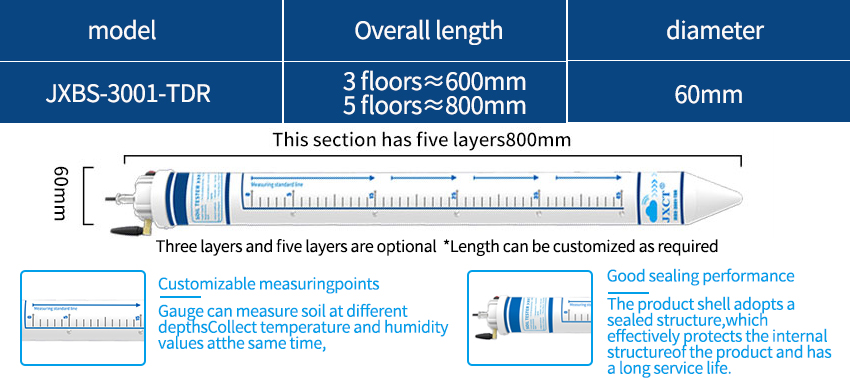Agriculture, the backbone of our society, is undergoing a significant transformation with the advent of advanced technologies. The integration of innovative solutions has opened up new possibilities and paved the way for a more sustainable and efficient agricultural future. Among these technologies, soil sensor technology stands out as a game-changer. By harnessing the power of soil sensors, farmers can gain valuable insights into the complex dynamics of soil health and make informed decisions about irrigation, fertilization, and overall crop management. This article explores how soil sensor technology is revolutionizing agriculture and unlocking its true potential.
Understanding Soil Sensor Technology:
Soil sensor technology involves the use of specialized devices that measure and monitor various parameters within the soil. These parameters include moisture content, temperature, nutrient levels, pH, salinity, and more. Soil sensors are strategically placed at different depths in the soil profile to capture data across the entire root zone. With advancements in technology, these sensors have become more accurate, affordable, and user-friendly, making them accessible to farmers of all scales.

Optimizing Irrigation Practices:
Water scarcity is one of the most pressing challenges in modern agriculture. Efficient irrigation practices are essential for maximizing crop productivity while minimizing water wastage. Soil sensors provide real-time data on soil moisture levels, enabling farmers to optimize irrigation practices. By closely monitoring soil moisture content, farmers can determine when and how much water to apply, ensuring that crops receive adequate hydration without over-irrigation. This not only conserves water but also prevents water-related stress or diseases and promotes healthier plant growth.
Enhancing Nutrient Management:
Proper nutrient management is vital for crop growth and development. Soil sensors play a crucial role in optimizing nutrient management by providing accurate information about nutrient levels in the soil. By monitoring these levels in real-time, farmers can adjust their fertilization practices accordingly. This precision reduces the risk of over-fertilization, which can lead to environmental pollution and runoff, and under-fertilization, which can result in nutrient deficiencies and reduced yields. With soil sensors, farmers can apply fertilizers precisely where and when they are needed, ensuring optimal nutrient uptake by plants.
Managing Soil pH and Temperature:
Soil pH and temperature significantly influence plant growth and nutrient availability. Soil sensor technology enables farmers to monitor pH and temperature levels, helping them make informed decisions about soil amendments and planting schedules. By maintaining optimal pH levels, farmers ensure that essential nutrients are readily available to plants. Monitoring soil temperature allows for better management of germination and growth rates, while also providing insights into potential disease risks. This information empowers farmers to take preemptive actions and optimize crop performance.
Detecting Soil Salinity:
Soil salinity, caused by excessive salt accumulation, poses a significant challenge to agriculture in many regions. High salt levels in the soil negatively impact plant growth, leading to reduced yields. Soil sensors equipped with salinity sensors allow farmers to identify areas with elevated salt levels accurately. Armed with this knowledge, farmers can implement targeted strategies to mitigate the effects of soil salinity. Techniques such as leaching excess salts, choosing salt-tolerant crops, and adjusting irrigation practices can help minimize the impact on crop productivity.
Supporting Data-Driven Decision Making:
The data collected by soil sensors forms the foundation for data-driven decision making in agriculture. Integrating soil sensor data with other relevant information, such as weather forecasts and crop models, empowers farmers to gain comprehensive insights into their farming operations. This data-driven approach enables precise interventions, efficient resource allocation, and maximum yield optimization. Furthermore, by analyzing and storing soil sensor data over time, farmers can identify trends and patterns, allowing for long-term strategic planning and continuous improvement.
Challenges and Future Developments:
While soil sensor technology has already revolutionized agriculture, there are still challenges to overcome and opportunities for future development:
a. Standardization and Calibration: Ensuring consistent accuracy across different soil sensor devices remains a challenge. Efforts should be made to standardize calibration protocols and develop user-friendly interfaces that simplify data interpretation for farmers.
b. Scalability and Affordability: Large-scale adoption of soil sensor technology is hindered by factors such as initial investment costs and maintenance requirements






